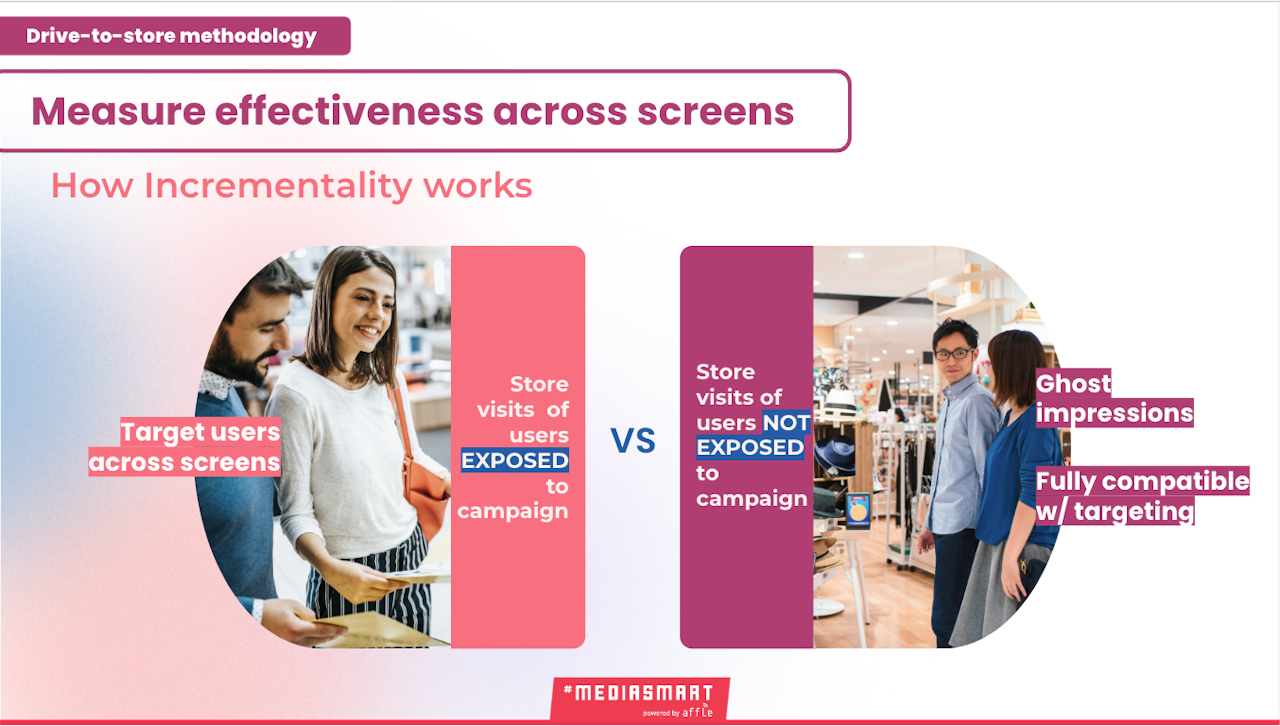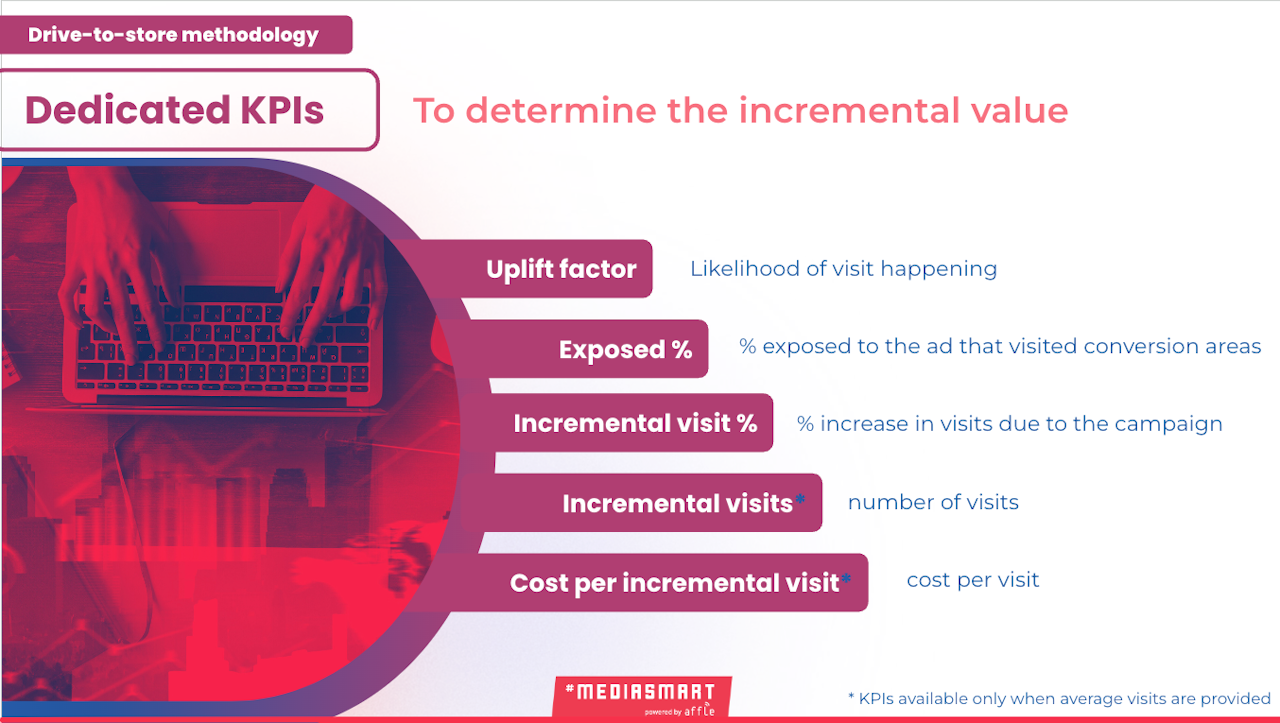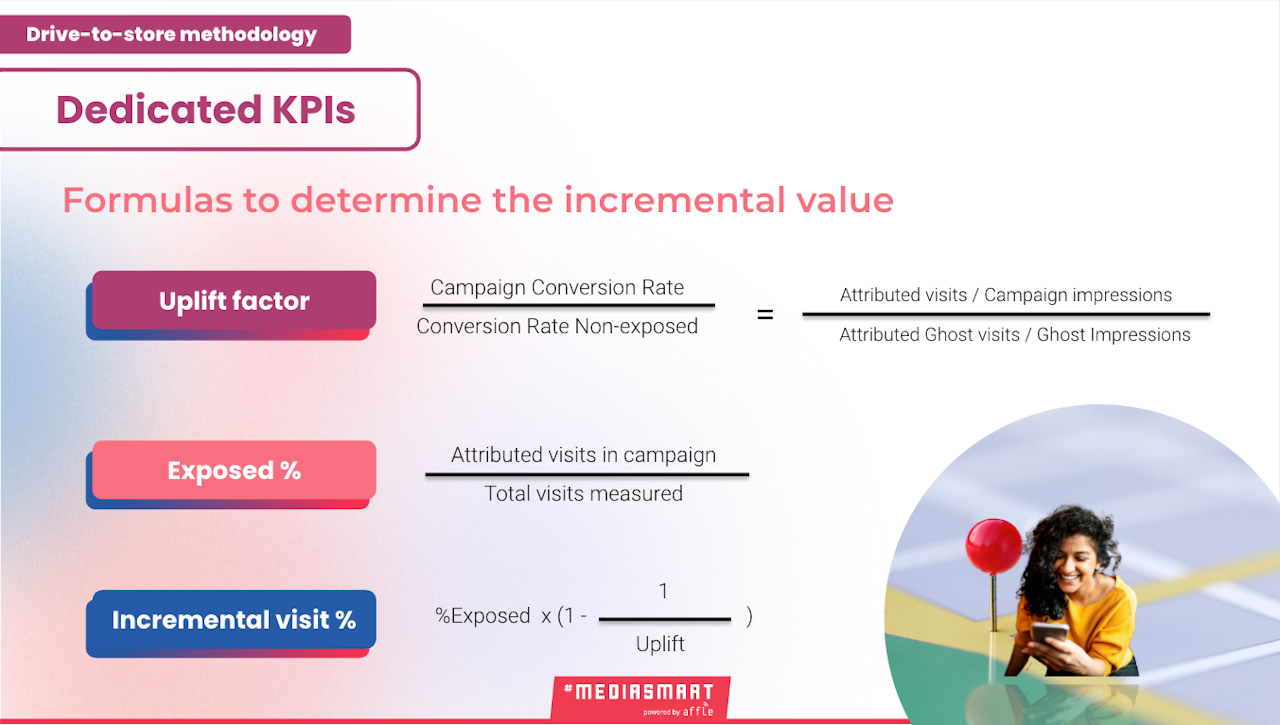

The problem
Attributed visits come from users who have seen an impression in a campaign and have been seen later in the area where we wanted to measure visits.
You could be counting the neighbor who lives on top of the store, the guy waiting for the bus across the street, and a random person who you targeted as she was moving from a bigger circle to a smaller circle.
You can also be missing a lot of people who went to the store but you cannot measure due to the limitations of your tracking method.
How can you make sure the visit you are tracking is not someone who lives/works above the building? GPS cannot differentiate between heights.

The Solution
We do not let the number of measured attributed visits determine the impact of the campaign, rather we measure incremental metrics. We compare the results we are measuring versus what we would have measured among a comparable set of users if the campaign was not served, and quantify such results via the drive-to-store KPIs.
When we launch a footfall campaign we also run a process in the background by which we count what we call placebo/ ghost impressions.
These "placebo impressions" are "counted" for some "placebo" users with the same characteristics as the users from the main campaign, for which we do not bid. Therefore are not real impressions, but only serve the purpose of comparing conversion rates for users exposed to the campaign versus those who were not.

The KPIs
That's why, to determine how effective a campaign has been whenever you are measuring footfall, we offer to measure effectiveness by the following KPIs:

